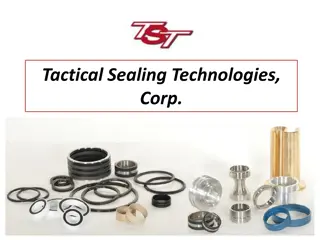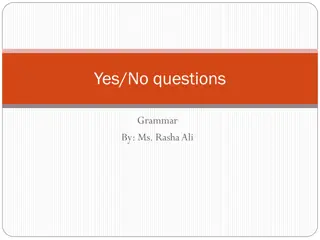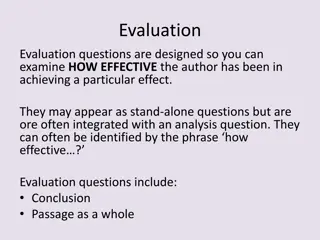
Understanding Heat Transfer in Chemistry
Explore essential concepts in heat transfer such as freezing point, melting vs. boiling, latent heat units, exothermic vs. endothermic reactions, and energy calculations in various scenarios. Enhance your knowledge of chemistry with clear visual explanations.
Download Presentation

Please find below an Image/Link to download the presentation.
The content on the website is provided AS IS for your information and personal use only. It may not be sold, licensed, or shared on other websites without obtaining consent from the author. If you encounter any issues during the download, it is possible that the publisher has removed the file from their server.
You are allowed to download the files provided on this website for personal or commercial use, subject to the condition that they are used lawfully. All files are the property of their respective owners.
The content on the website is provided AS IS for your information and personal use only. It may not be sold, licensed, or shared on other websites without obtaining consent from the author.
E N D
Presentation Transcript
#1 what is the freezing point? 120 90 60 30
#2 Which takes longer melting or boiling. WHY?
#3 What is the opposite of vaporizing?
#4 Which areas of a heating curve undergo an increase in kinetic energy? Use our numbering system (1, 2, 3, 4, 5)
#6 If water vapor condenses on the outside of a soda can is energy absorbed or released? Is it endo or exothermic?
#7 The quantity of heat required to change the temperature of 1 g of a substance by 1 C is defined as what?
#9 What section of the heating curve have atoms moving the most? Use our numbering system, 1, 2, 3, 4, 5
#10 If a reaction is endothermic do you feel hot or cold?
#11 If a reaction is exothermic is Q positive or negative? Is T positive or negative?
#12 Calculate the energy transferred when 4.6g of ice is melted.
#13 Calculate the energy transferred when 36.8 grams of water forms an ice cube in a freezer.
#14 How much energy is required to heat 25 grams of ice from -10 C into water at 0 C?
#15 What is the energy during a phase change being used for?
#16 How much energy does it take to raise 50 grams of ice at 0 C to 100 C and then boil.
#17 A metal spoon is used to stir a cup of hot chocolate. What is the sign (+ or -) of the Qspoon?
#18 Which part of the heating curve for water requires the most amount of energy to speed up the molecules?
#19 Compare a piece of brass with a specific heat of 0.85 J/g C and water with a specific heat of 4.184 J/g C. Which of these substances heats more quickly? Why?
#20 Which of the two substance (blue or red marks) would cool the fastest?
#21 What law is important for calorimeter calculations?
#22 Which way does heat flow? Hot cold OR cold Hot
#23 Why does a bathtub full of water heat faster than a swimming pool full of water?
#24 How much energy in joules does 30.0 g of sulfur lose when it lowers from 120 C to 114 C. The specific heat of sulfur is 0.71 J/g C
#25 A piece of iron is heated until it absorbs 300J of energy. It is dropped into a cup of cold water. What is the Qiron, and Qwater once the metal is in the water?
#26 The amount of energy needed to heat 40.00 g of iron from 40.0oC to 100.0oC is 100 J. The specific heat specific heat capacity is what?
#27 The specific heat capacity of aluminum is 0.89 J/goC. Calculate mass of the aluminum block if 8900 J were needed to heat the aluminum from 75.0oC to 145.0oC
#28 an unknown metal has a mass of 280g, absorbs 3000kJ of energy and goes from 10 C to 95 C. What is the specific heat?
#29 How much energy is required to boil 10 grams of mercury if the latent heat of vaporization is 294 J/g
#30 mercury is a neurotoxin that when inhaled can be highly dangerous. Calculate the amount of energy required to change 14g of liquid mercury into a gas at 357 C. The latent heat of fusion is 11 J/g and the latent heat of vaporization is 294 J/g
#31 a substance has a melting point of 27 C and a vaporization point of 168 C. Draw the heating curve.
#32 How much energy is released when cooling 10g steam from 150 C to ice at -15 C?






















